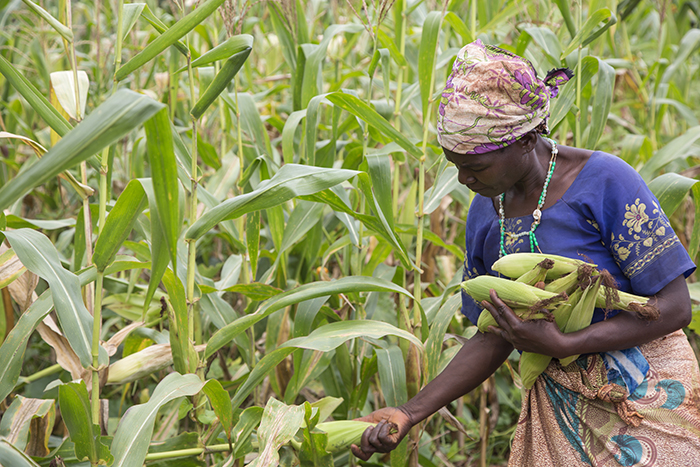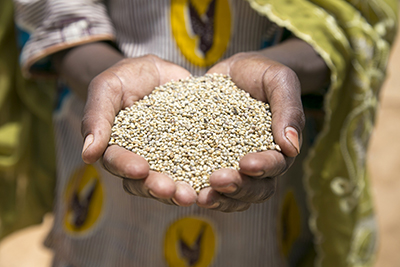

Break the Cycle of Poverty
The United Nations observes many international days. This week alone, you may hear or read about World Food Day, the International Day of the Girl and the International Day for the Eradication of Poverty—just to name a few.

These dates are important to Catholic Relief Services because they celebrate the core of our work—a commitment to humanitarian relief and development. Our work and comprehensive programming meets both the short-term and long-term needs of the people we serve.
We help poor and vulnerable people around the world overcome emergencies, earn a living through agriculture and access health care. CRS’ comprehensive programming meets the short- and long-term needs of the people we serve.
Disaster preparedness and risk reduction
When an emergency happens, like the earthquakes in Nepal last spring, we’re often first on the ground with prepositioned supplies and resources to quickly serve people in need.
We also work to soften the blow of the next disaster by working with disaster-prone communities to ensure they’re better prepared in the future. Our work with local leaders and community members helps save lives, strengthens community resilience and prevents lasting damage.
Hunger, agriculture and food supply

CRS helps millions of farmers worldwide recover from natural disasters and civil strife. Our programs help them increase their crop yields and incomes, improve their diets and strengthen their relationships with local markets. Our agriculture work builds communities and futures by including rural people, particularly women, in decision making and activities that improve their living conditions. And we teach agriculture techniques that help communities rebuild and protect their soil, water supply and landscape.
By guiding farmers to a better harvest through healthy seeds, innovative farming skills, improved infrastructure and conservation techniques, we are teaching farmers to feed the world. After all, a harvest that yields food and income is the key to fighting poverty and hunger in much of the developing world.
Social protection and agriculture
The theme for World Food Day 2015 is Social Protection and Agriculture: Breaking the Cycle of Rural Poverty. According to the Food and Agriculture Organization of the United Nations, social protection is “a range of solutions, often combined with each other, — such as work opportunities, provision of food, money and services — that are designed to support the vulnerable and help the poor in society move out of hunger and poverty."
That is what CRS does every day in the 101 countries we serve. Food alone will not eradicate poverty. But agriculture training, good soil and healthy seeds, combined with health, education, microfinance and capacity-building programming, will grow communities and draw more attention to both struggles and success stories in food and agriculture development.
GET INVOLVED:
Learn: Read more about CRS’ emergency response and recovery, agriculture and health programming.
Give: Help CRS respond to emergencies.
Advocate: Learn about hunger and how you can make a difference.
Pray: Ask God to remember our brothers and sisters who go hungry.
Learn: Read more about the United Nations International Days and World Food Day 2015.

